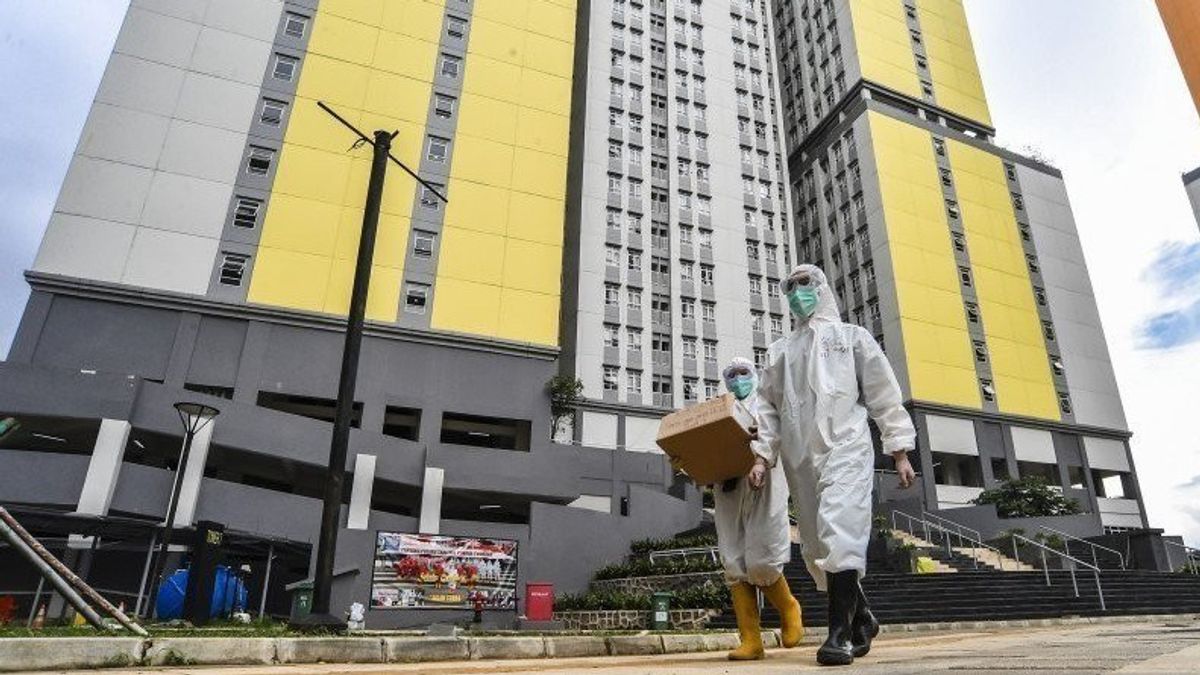JAKARTA - The DKI Jakarta Health Office has prepared additional bed capacity for COVID-19 positive patients up to 11,500 units from the current bed capacity of 5,678 units, to anticipate a spike in COVID-19 cases.
"Currently, there are 5,678 beds for COVID-19 patients in hospitals, this can still be increased to 11,500 beds," said Head of the Disease Prevention and Control Division of the DKI Jakarta Health Service, Dwi Oktavia, quoted by Antara, Saturday, February 5.
According to Dwi, the number of referral hospitals for COVID-19 positive patients remains at 140 hospitals, only the bed capacity has been increased. "Each hospital is ready to increase its bed capacity, because it has experience in the second spike of COVID-19, July 2021," he said.
The DKI Jakarta Provincial Government also recorded the bed occupancy rate (BOR) in the isolation rooms for COVID-19 patients at 140 referral hospitals in Jakarta, filled with 3,572 patients or reaching 63 percent of the total capacity of 5,678 beds.
Dwi added that the capacity is still relatively safe because it has not passed 70 percent as the threshold for treating COVID-19 patients. "The bed occupancy rate is still okay, still less than 70 percent," he added.
Meanwhile, the beds for COVID-19 patients in the Incentive Care Unit (ICU) until Friday (4/2) were filled with 220 patients or 31 percent of the total 701 bed capacity. "Added and diverted, from the original use for non-covid treatment, it has changed to Covid," he said.
However, not everyone who is exposed to COVID-19 is treated or isolated in a hospital.
Previously, the Head of the DKI Health Service, Widyastuti, said that COVID-19 patients without symptoms can undergo independent isolation at home, as long as they meet clinical and home requirements.
"Clinical conditions include that patients must be less than 45 years old, have no comorbidities, can access telemedicine or other health services, commit to remain isolated before being allowed to leave," he said.
Meanwhile, the requirements for the house and other supporting equipment are that the patient must be able to live in a separate room (better if the floor is separate), there is a bathroom in the house that is separate from other residents.
Then, if the patient does not meet the clinical requirements and the house requirements, the patient must isolate in a centralized isolation facility and under the supervision of the local Puskesmas or Task Force.
Meanwhile, people who are at risk of experiencing severe and fatal symptoms if they suffer from COVID-19 are people aged 60 years or older and have a history of hypertension (high blood pressure), diabetes mellitus (diabetes).
Then, heart disease, chronic lung disease, chronic kidney failure, immune disorders (including HIV), obesity/overweight, cancer, and pregnancy. "People infected with COVID-19 with these risk factors should be closely monitored by health workers," he said.
The English, Chinese, Japanese, Arabic, and French versions are automatically generated by the AI. So there may still be inaccuracies in translating, please always see Indonesian as our main language. (system supported by DigitalSiber.id)













